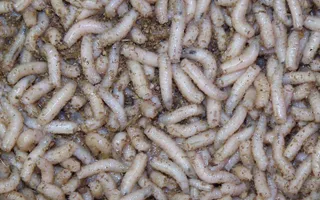We all get the impression that everything in fishing is new and modern. Things couldn't be further from the truth and anglers are great at reinventing tackle, tactics and baits. The humble maggot is no exception.
Colonel Robert Venables wrote 'The Experienced Angler' or 'Angling Improved' in 1662, printed for Richard Marriot and sold in his shop in St Dunstan's churchyard, Fleet Street, London. Venables said:
“Keep gentles or maggots with dead flesh, beast's livers or suet: cleanse or scour in meal, or bran, which is better: you may breed them by pricking a beast's liver full of holes, hang it in the sun in summer time: set an old course barrel, or small firkin with clay in it, into which they will drop, and cleanse themselves in it.”
17th-century angling
Not so sure about the "firkin". Let's get out the Oxford again. Don't worry, it is "a small cask for liquids, butter, fish, etc". Anyway it shows that maggots were very much at the centre of fishing baits as early as the middle of the 17th century.
Just nine years earlier, Izaak Walton made his mark with the 'Compleat Angler' published in 1653. Izaak 'borrowed' from other angling books of the period but nevertheless his advice was sound. He too describes how to breed gentles.
It wasn't long before the tackle dealers of the time latched on to providing a service for the angler. Around 1700 William Browne, a noted tackle dealer, who sold from The Sign of the Fish in Black Horse Alley, London, advertised his wares. “Maketh all sorts of Fishing Rods, Artificial Flyes and selleth Kirbie's hooks, the Indian Weed commonly called grass, Worms, Gentles and all sorts of Fishing Tackle."
Gentle boxes and worm bags
Later that century Onesimus Ustonson was advertising "gentle boxes" and “worm bags”. For storage and transportation of the maggots, some bright spark came up with the “gentle shoot”, a weird looking cone-shaped contraption with a circular bait tin on top.
As the 20th century dawned and the great era of match fishing was born, the north became the hotbed of competition between rival towns. JE Miller of The Northern Anglers Depot, 19, New Station Street, Leeds was selling “large fat maggots” at 1/- (5 new pence) for a solid pint. By this we can assume that these maggots were measured 'neat' before the addition of sawdust, bran or maize meal. A sample box cost just 8 old pence “carriage paid”. As far as I am concerned, maggots by post are a bit iffy.






